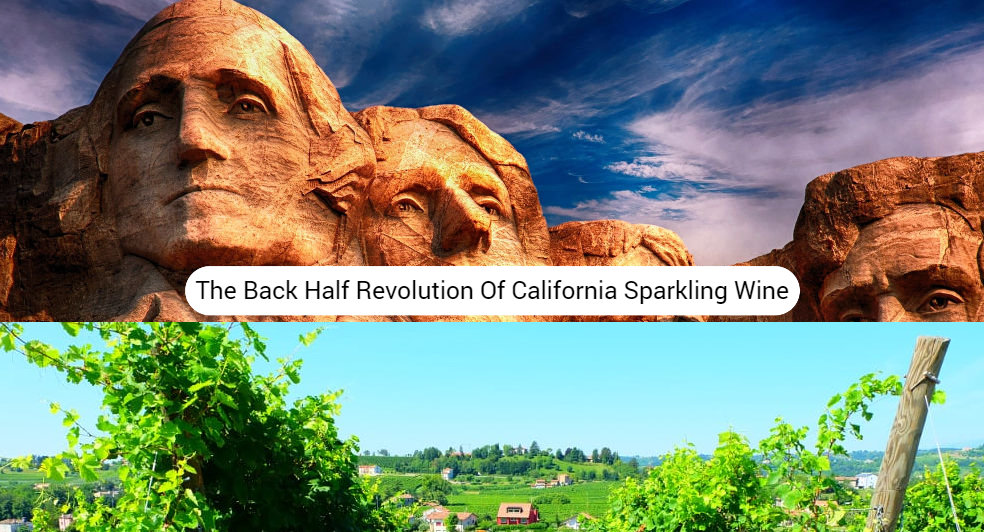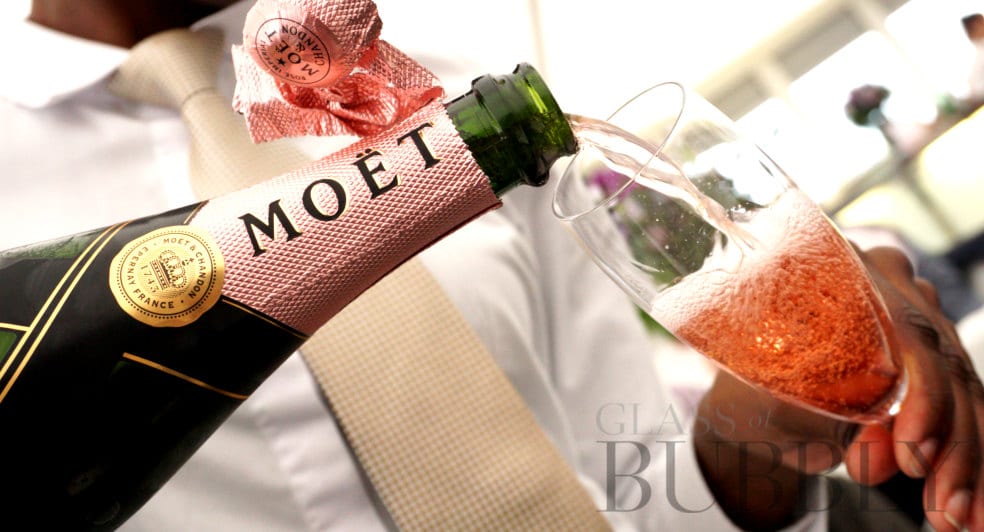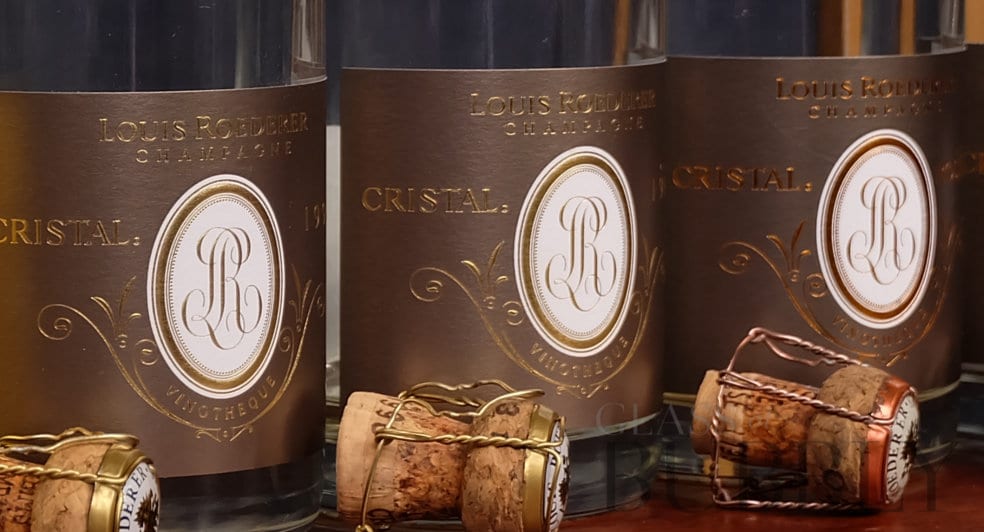The Back Half Revolution Of California Sparkling Wine
14th April 2023

Domaine Chandon of Yountville-Napa Valley

The Moët & Chandon Grandes Marque post 1960’s saw immense growth through diversification, and acquisitions of new distribution sales: Marie Brizard liqueurs, Glenmorangie Single Malt Scotch, and of course venturing into the New World territories.
The splashiest New World winery opening happened in Yountville-Napa Valley at the Domaine Chandon Napa Valley sparkling wine cellars.
The Restaurant, with reservations obtained only by hook or crook connections, finally opened in 1977. The Restaurant was merely a part of the sprawling Chandon complex, with the indoor dining room seating 112 guests, with another 45 private seating for lunches or dinners. The hardest reservations to secure were on the patio surrounded by romantic shaded trees. What tickled me most about the state of fine dining in the Napa Valley was the complete adherence to classic fine dining service (open arm embracing serving from the left, and removing from the right you never would cross the guest’s threshold backhanding, etc) techniques, combined with a laid back comfort supplied by the staff that immediately left the guest at ease. The staff greeted and spoke as if they were a long lost relative: genuinely welcoming, without pretense affectations. Today it is commonly practiced in service standards, but in the days of La Révolution de la Nouvelle Cuisine, the juxtaposition of casual, friendly beckoning, yet flawlessly correct service was an original concept!
The gorgeous restaurant design was a collaboration between Robert-Jean de Vogüé and Californian John Wright, met with Dawnine Dyer’s delicious wine interpretation aided by the Moët & Chandon French Champagne expertise. The Chandon wines displayed the textbook hallmark brioche yeasty aromas, with impeccable fruit sourced from the Napa Valley AVA’s (American Viticultural Areas) of the coolest Carneros, and Mt. Veeder vineyards. Celebrated, and renowned French chefs reinforced the restaurant’s reputation earning a Guide Michelin star in 2006. Unfortunately, the food service catering lease was legally at odds with the amended (2005) California catering service regulating permits from the Alcohol Beverage Control licensing and tax commission within an operating winery. The Restaurant after 37 years, serving hundreds of thousands of guests ceased hospitality service in 2014.
The supremely successful Domaine Chandon Blanc de Noir 32$ (Blanc de Noir originally pioneered by Schramsberg in 1967) Chandons Blanc de Noir sparkling wine took the North American continent by storm in restaurants *by the glass* programs in the 1980’s. A brilliant flavor profile of ripe cherries, dusty cocoa with floral berry aromas, the wine was irresistible especially when culinarily paired with luncheon brunch menus. Finally, an American classic was born in Napa Valley from a French collaborative partnership! Also a first is the charming 187ml Limited Edition Blanc de Noir 11$ single service bottling. There is also the non vintage Brut cuvée 29$ , and a rare (magnum only) non vintage Réserve cuvée 90$ extended yeast contact tirage displaying toasty brioche yeast flavors.
Roederer Estate of Anderson Valley-Mendocino

I have had a love affair since 1972 when I read my first memoir-cookbook by David Olney who commented (with references of Elizabeth David) on the spectacular way Cristal Champagne evolves as it ages. Cristal, being Louis Roederer’s Tete de Cuvée is produced only in vintage years, Roederer even willingly does not produce a vintage wine when other Grandes Marques happily do. This intrigued me about a Champagne house with elevated standards, and the quality commitment to back it up. My first experience was in 1989 from a magnum of the 1980 vintage. It was at eight years beginning to exude the smoky pepperiness that sautéed Guanciale bacon fat produces, and the 1980 vintage I’d not seen presented before. Then in 1991 a couple I had stood to be Best Man at their wedding brought a magnum of 1980 Dom Pérignon from their Italian honeymoon, it was another spectacular example of this sublime vintage Champagne.
If the Grandes Marques Champagne house declares a vintage to their Tete de Cuvées, it is most likely an excellent and reliable indicator.
The Louis Roederer Champagne estate is an independent seventh generation family winery, run today by Jean-Claude Rouzaud and his son, Frédéric. There are so few historic estates still under family leadership with commitment to their values. Louis Roederer decided in the early nineties to adopt all organic growing on the estate, which eventually led to Biodynamic viticulture. This is not an easily achieved feat in Champagne, an isolated region renowned for buying blue trash bags from the Paris refuse department, to be tilled as fertilizer under the vineyards soil. I still think of the surprise on my face as I toured the Champagne vineyards in 1975, recognizing the telltale Cerulean blue trash bags poking from underneath the soils. This fertilizer technique combined with the host of petrochemicals to combat vineyard diseases several human induced, made conscientious wineries reconsider their farming protocols. You may have recognized a lot of consolidation shuffling in the beverage business over the previous twenty years. I expect this is one reason for many people re-examining how to earn a rural income.
The life of a vigneron is not an idle passive experience. To be at the top of your Champagne game: your house must hire diligently trained and conceptually modern thinking professionals who work tirelessly 365 days planning yearly strategies for the vineyard, and in the wine cellar. Manufacturing champagne requires a massive investment to make the wine. At Louis Roederer there are up to 410 separately vinified vineyard’s parcels, from 120 hectares of vineyards. Add to this, the cost of organic/biodynamic grape farming, and all those who tow conventional agriculture methods believe this is impractical lunacy.
Perhaps so, but a growing consensus is afoot in all of the wine world, from the EU to Southern Hemisphere wineries, Biodynamics is real, and a valid practice with critical wine scores, and acclaimed glowing reviews to back up the Biodynamic principles.
The Rouzaud family Champagne board agreed to develop the marketing synergies of other family style wineries in prestigious regional vineyards that could be publicly marketed under Maisons Marques and Domaines, guided by Louis Roederer’s distribution network. This concept allows each winery to operate independently (within the agreed upon export marketing conditions, and the Biodynamic viticulture principles), and release their wines and ship them as available. These would be represented by the MM&D US sales teams distribution region.
There are currently five countries’ represented winery affiliates, all of whom have their own regional style so there is no stepping on competitors’ toes.
Their plan is flawless, and an effective strategy.
I was dining at Rubicon restaurant in the SF Financial district, and ordered an aperitif glass of Louis Roederer non vintage. I experienced the flavors and texture profiles of what the non vintage French blend could offer to Champagne. The complexity and refinement given this humble glass selection was punching way above its weight category. It has only been four years since I’d last had the 1980 Cristal from magnum, and I was suitably impressed with this new crop’s wine results.
In 1982 Jean-Claude Rouzaud traveled the length of California’s vineyards to find the ideal climate to plant his Roederer French/American estate flag. His chosen location was in the heart of Anderson Valley-Mendocino. If you are exhausted and disheartened by an afternoon sojourn to Napa Valley, a voyage to Mendocino would be a virtual transatlantic journey by comparison. Rouzaud reasoned the higher vineyard elevations would offer a wider flavor base for the wines enabling a superb non vintage palette with which to blend.
Add to the mix, organic and Biodynamic viticulture you had a magical combination in Northern California.
Roederer Estate Brut non vintage 36$ is 100% Anderson Valley fruit, grown in the foggy days and chilly nights of Northern California. As a result the tension between the grape acids and the depth of core fruit (apple/pear), with Chardonnay’s snap displayed ginger character is refinement seldom evoked by a California wine that tends to rely upon traditionally fruity characteristics.
Roederer Estate Brut Rosé non vintage 40$ according to winemaker Weyrich, “is a blend of pinot noir and chardonnay. For color, the winemakers prepare a small portion of pinot noir wine with extended maceration, adding about three to five percent to the blend before the secondary fermentation, imparting a subtle salmon tinge. Both the blend and addition of the small amount of red wine create a charming wine of discreet finesse.”
Weyrich recommends this wine is best enjoyed in the flush of youthful vibrancy!
Roederer Estate L’Ermitage cuvée 2015 68$ is the flagship Tete de Cuvée for Roederer Estate. Only estate first run grape juice pressing is used and the blends for L’Ermitage are the finest wines of the declared vintage.
The wine for the dosage added to the L’Ermitage 2015, was the 2015 vintage wine liquor aged for 6 years in seasoned French oak casks. Following disgorgement, L’Ermitage 2015 was aged an additional six months (minimum) on the cork prior to release.
Roederer Estate L’Ermitage Rosé cuvée 2013 100$ is the flagship Tete de Cuvée Rosé for Roederer Estate. Winemaker Weyrich explained: “The rosé blend is crafted using a small fraction of red wine, from pinot noir grown on the estate, especially made for this purpose using Burgundian maceration technique that allows skin contact to extract color and aromas. This red wine brings delicate berry flavors and a nice color to further extend the L’Ermitage smoothness and subtleties, allowing for a unique tasting experience.
The wine for the dosage used in the L’Ermitage Rosé was the 2013 wine liquor, aged for 7 years in seasoned French oak casks. Following disgorgement, L’Ermitage Rosé was aged an additional 6 months (minimum) on the cork prior to release.
The L’Ermitage vintages are a true expression of the Roederer Estate finest wines!
Domaine Carneros of Carneros-Napa Valley
Domaine Carneros is another French (Taittinger) & American collaboration set in the rolling hills of Carneros-Napa Valley district.
The purposely lazy Carneros Highway reveals glimpses of the classically breathtaking Domaine Carneros Château design. Lest you be lulled into a false sense of predictability, there are metal Sheep sculptures (12 white, with 1 black Ram) on the opposite hillside that draw you back wittily into reality. Carneros means “Ram” in Spanish.
Ms Crane has been the CEO/Winemaker for Claude Taittinger’s California winery since the project’s inception. She has built the brand, and house style, taking cues from the Taittinger Champagne model expressing elegance, refinement, and balance. In 2020, after 33 years, Crane passed the torch to a new CEO, Remi Cohen.
As you can see there’s a catalog of unique styles from Domaine
Carneros:
2018 Estate Brut cuvée 38$
“Those who know our sparkling wines speak of their balance, depth of flavor and wonderful finish; their great aroma, elegant style and little, tiny bubbles,” says Founding Winemaker Eileen Crane. “Classic. Sophisticated. Timeless. Think Audrey Hepburn in a little black dress.”
2019 Brut Rosé 46$ entices with luscious notes of rose petal, honeysuckle, and grilled peaches. A blend of Pinot Noir with a touch of Chardonnay for balancing structure.
2016 Late Disgorged Brut 59$ is aged on the yeast lees for six years for extra added complexity and ageability.
2017 Ultra Brut 50$ hails from the stellar ‘17 vintage with exotic aroma expressions of yuzu fruit, vanilla bean, lime zest, and a hint of walnut.
2015 Le Rêve Blanc de Blancs 125$ is the Tête de cuvée, an estate Chardonnay aged 6 years on the yeast, and a holiday limited release.
2016 Le Rêve Rosé 145$ is the Tête de Cuvée, a sparkling Pinot Noir of estate vineyards aged 6 years, and a limited holiday offering.
2017 Late Disgorged Brut Rosé 62$ is aged five years with unparalleled harmony and nuance.
2018 Blanc de Noir 45$ hallmark characteristics of fruity fleshiness with a bit more body and texture. Exclusively only available at the winery.
2018 Vermeil Demi-sec 39$ is a lightly sweet, delightfully fruity sparkling wine.
2018 Blanc de Blancs 65$ a fresh bright Chardonnay dry sparkling wine.
The first public release was in 1989 to delighted critical acclaim. The drive through the Carneros district is a charming rural relief from hectic Northern California driving.
![]()
Peter Birmingham
Restaurant General Manager, Corporate Beverage Director, & Hospitality Consultant, with these qualities he represents a Triple Threat: a culinary tableside historian, an accomplished wine taster with the casual ability to make flavor relationships and beverage quality value accessible.
